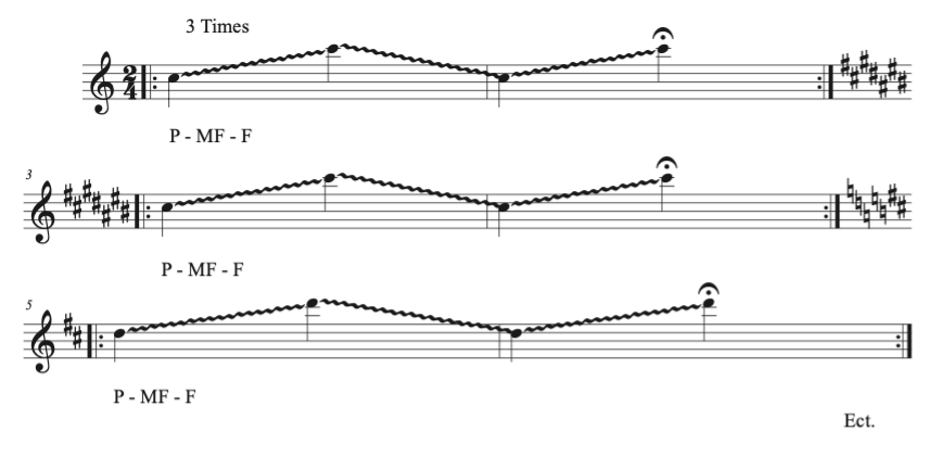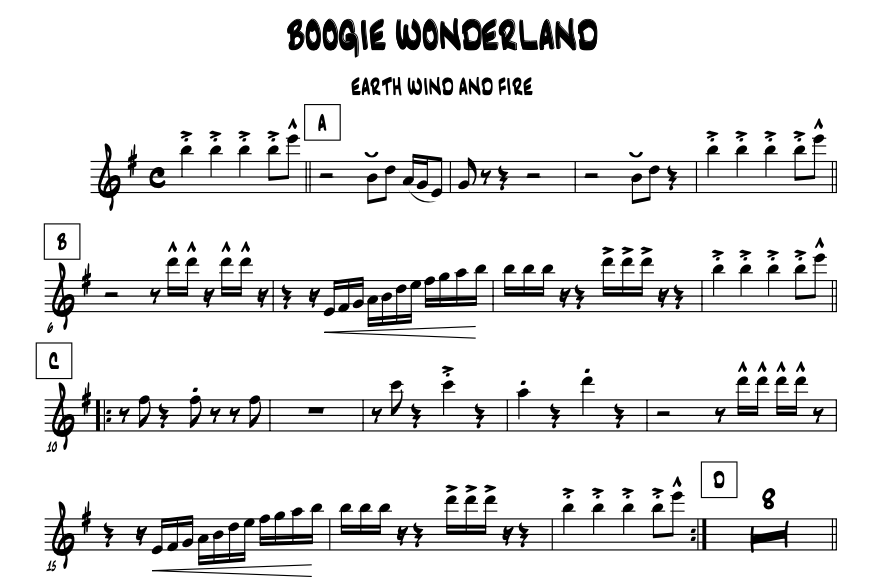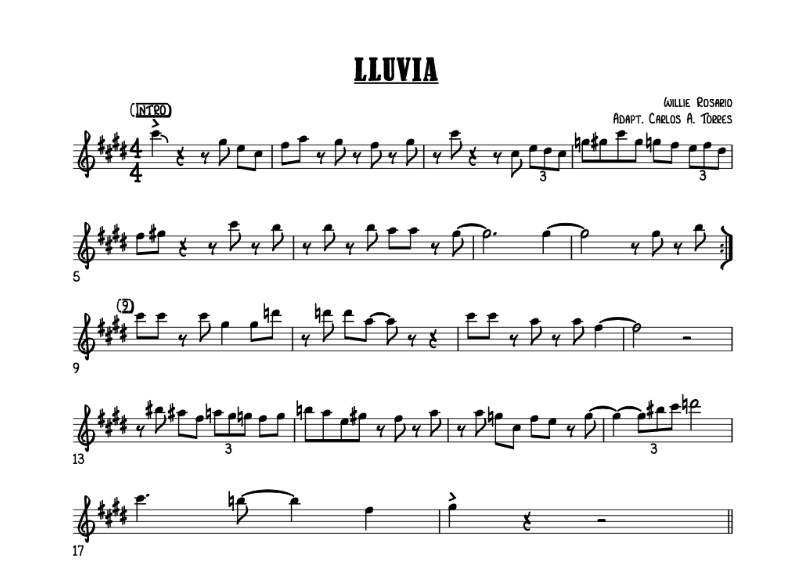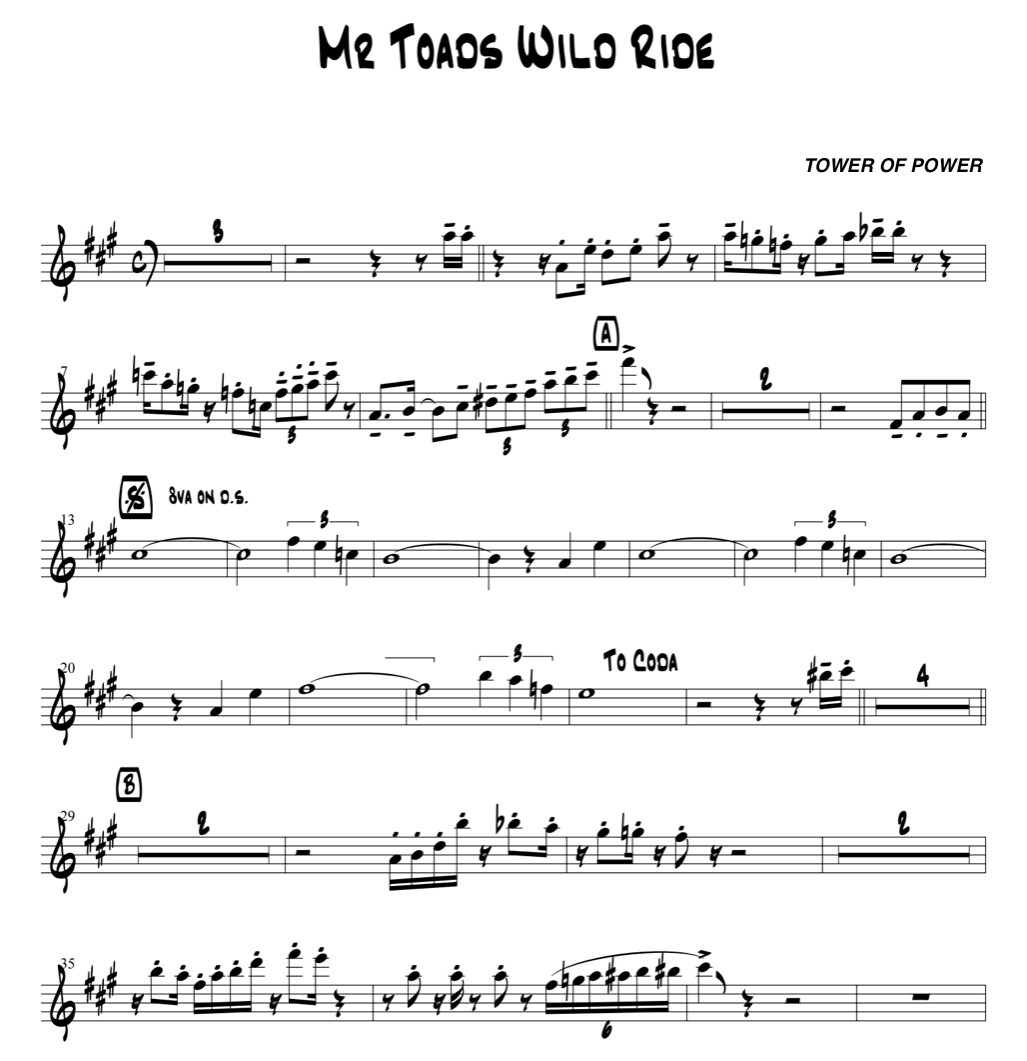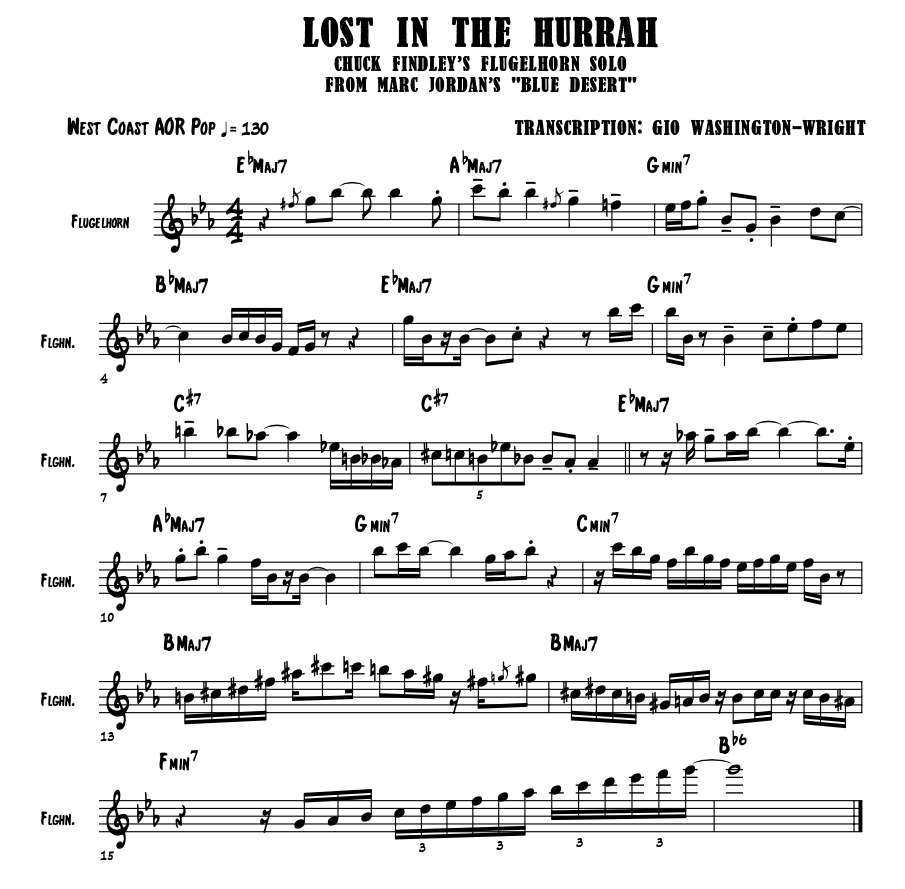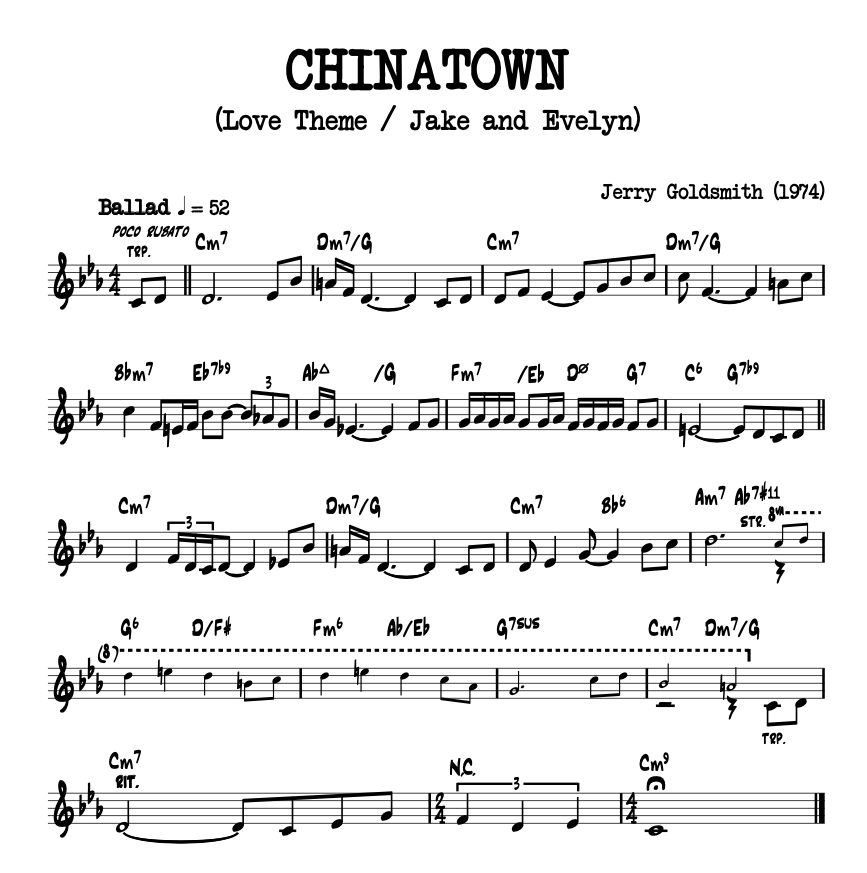The Commercial Trumpet Player: How to sound like the Pros
The Commercial Trumpet Player: How to sound like the Pros
Origins in the Studio and Broadcast Era (1940s–1960s)
When radio, television, and recording studios became major employers for musicians, a new kind of trumpet player emerged.
They’re expected to:
Read anything at sight
Play lead trumpet with power, range, and endurance
Blend across styles (jazz, Latin, pop, swing, R&B, rock, etc.)
Sounds great under a microphone
Essentially, they make their living in the commercial music industry, rather than in orchestras or academic settings.
They set the “commercial” standard: strong range, consistent tone, perfect intonation, and stylistic flexibility.
A commercial trumpet player performs in non-classical, mass-audience music settings, such as:
Big bands
Pop, rock, Salsa, or funk horn sections
Television shows
Studio recording sessions
Broadway pits
Film and TV soundtracks
Live touring productions
These musicians weren’t “jazz” or “classical” specialists — they were commercial, meaning they worked in the commercial music industry (as opposed to symphony or small jazz combos).
Studios in New York, Los Angeles, and Nashville were the main hubs.
The Term “Commercial Music”
“Commercial music” referred to music created for mass consumption — radio hits, film, TV, and advertising — rather than art or academic purposes.
So, a commercial trumpet player was one who could deliver polished, stylistically adaptable, high-energy performances for these commercial contexts.
Some Notable Early Commercial Trumpet Players
Players like:
Conrad Gozzo
Al Porcino
Snooky Young
Uan Rasey
Bud Brisbois
Pete Condoli
Conti Condoli
Jimmy Maxwell
Arnie Chycoski
Bernie Glow
Dick Perry
Don Thomas
John Audino
John Frosk
Cappy Lewis
Jack Laubach
Mickey McMahon
Johnny Madrid
Ray Wetzel
Modern Use and Some Notable Players
Today, “commercial trumpet player” still describes someone who works primarily in:
Pop, rock, funk, Salsa, or jazz big band horn sections.
Studio sessions.
Broadway or touring productions.
Film/TV recording.
Players like:
Malcom McNab
Jerry Hey
Garry Grant
Chuck Findley
Larry Hall
Rick Baptist
Wayne Bergeron
Jon Lewis
Dan Forenro
Steve Patrick
Tony Kadleck
A Selection of Broadway Shows in Film or Stage with Great Trumpet Moments:
A Chorus Line (original)- Bob Millikan
City of Angels (original)- Byron Stripling
Gypsy (Bernadette Peters)- Chris Jaudes
Thoroughly Modern Millie- Craig Johnson
The Producers (original)- Dave Rogers
Bounce- Fred Irby
Gypsy (Bette Midler film)- Gary Grant
Spamalot- John Chudoba
Motown- John Chudoba
West Side Story (2009)- John Chudoba
Hello, Dolly! (Midler)- John Chudoba
Funny Girl (Lea Michele)- John Chudoba
Will Rogers Follies- John Frosk
Carousel (1994 revival)- John Frosk
Chicago (1996)- John Frosk
Some Like it Hot- Liesl Whitaker
42nd Street (West End)- Mike Lovatt
Honeymoon in Vegas- Tony Kadleck
Gypsy (Lupone)- Tony Kadleck
West Side Story (film)- Wayne Bergeron
Fosse (1990): Craig Johnson
Little Women: Tony Kadleck
Grand Hotel: Burt Collins
Legally Blonde: Dave Trigg
Damn Yankees (1994): Dave Stahl
Annie Get Your Gun (Peters): Chris Jaudes
Original Funny Girl: Dick Perry
The wiz (2024) John Chudoba
White Christmas (2006) Chris Jaudes
How to Sound like the Pros:
The Commercial trumpet's role is to lead the band and establish a rhythmic and stylistic connection with the drummer. The trumpet’s ability to lock in with the rhythm section is of utmost importance because the rest of the horn section will look to the trumpet to set the stylistic standard. It falls on the first trumpet player's shoulders to interpret a chart correctly and consistently so that a band can follow its lead. The following guide aims to provide a study framework for a trumpet player interested in playing contemporary music with stylistic accuracy. The eleven stylistic elements that any player must account for are in order of importance: time, tone color, phrasing, articulations, dynamics, vibrato, shakes, glissandos, falls, bends, and scoops.
The process is as follows:
1.Select a recording or trumpet player that you would like to study. Listen to the recording until you can sing the part perfectly, making octave adjustments as needed.
2. If possible, obtain a printed copy of the trumpet part of said recording. If a chart is unavailable, transcribe the part with the highest accuracy possible.
3. Observe how the trumpet player places the musical figures within the musical time. Note the locations where they push or pull the time and how it relates to the rhythm section and the rest of the band. I use the following exercise to help me develop my time feel: I use a metronome and practice Exercise 1, listed below, in all keys and tonalities with the metronome clicking on varying beats. I also use a metronome app called Tempo for iOS that turns the metronome off and then back on at random. Maintaining consistent time is essential in the role of the trumpet, and I aim to keep that consistency no matter where I place the melodic line within the beat. This helps bandmates follow your leadership, as stated before.
4. Observe their tone: is it laser-like? Is it broad and warm? Is it raspy or played with a growl? Make a note of this on the part. If it is raspy, identify if a growl is being applied by either a flutter tongue or growling in the throat while playing. I work on my tonal color by playing familiar melodies in all keys. It is essential to emulate our favorite-sounding trumpet players in what they play and how they play it. Observe the points where they break or extend the phrase and note this within the part. Pay special attention to how they phrase, including rests and breaks in the melodic line. I work on my phrasing by practicing long melodies and playing them in all keys and styles. Phrasing gets overlooked because it is synonymous with all forms of music. However, know that it is what separates professionals from others. I can continually refine my approach to phrasing through singing and listening to others.
5. Observe all articulations; this is a time-consuming but essential process. Listen to how and when they articulate. Take note of any articulations that are emphasized or different from others. There are generally four different articulation markings within a chart, but many shades within these markings. The first is (-); the dash above the note means legato, and a longer note is usually a "doo" articulation. The second is ( > ). This accent is traditionally played with a "ta" like articulation. The third is the marcato or “housetop” accent ( ^ ), which is played with a "dot" like articulation. Lastly is the staccato articulation ( . ), usually played with a "dit" like articulation. These articulations have many shades, are among the most personal trademarks a commercial player uses, and are determined by the era.
Musical Exercise 1: Keyed Time Drill
Exercise 1 in all keys and tonalities to work on time and play both straight and swung. Try placing the notes in different parts of the beat.
6.Observe the use of vibrato and focus on the speed, width, and where it occurs. Fast, frequent vibrato is a trait of the swing era. It is usually done with hand vibrato, which is quicker and more intense. A more rapid vibrato is generally used on extended notes in the 1950s–60s styles. The note is established in the said musical eras, and then the vibrato is added; take note of this nuance. In more modern pieces, vibrato is slower, wider, and often absent. When there is no vibrato, note the harmonic chord structure around the first player; if it is a cluster voicing, avoid using vibrato at that point in the chart. I work on vibrato by playing the same melodies or tunes and making them sound from different eras. For example, I would play the melody to Stardust and make it sound like it was from the 1920s or ’30s with fast, narrow vibrato, and then play it again and stylize it like it was from the 21st century.
Musical Exercise 2: Articulation Range Study & Musical Exercise 3: Syncopated 5ths through the horn
Exercise 2 and Exercise 3 in all keys and tonalities to work on my articulations. I vary my articulations to include all the mentioned articulations. I also practice these exercises straight and swing. With Exercise 3, I will also adjust the rhythm to address my specific needs. Be creative in your practice and compose the exercises that target your weaknesses.
Exercise 2 and Exercise 3 in all keys and tonalities to work on my articulations. I vary my articulations to include all the mentioned articulations. I also practice these exercises straight and swing. With Exercise 3, I will also adjust the rhythm to address my specific needs. Be creative in your practice and compose the exercises that target your weaknesses.
7. Observe the use of dynamics and focus on how the dynamics are shaded in relation to the phrasing. Take note of any overdramatized dynamics and listen to how the trumpet player’s dynamics are locked in with the comping of the rhythm section. I work on my dynamics when playing melodies in all keys and styles.
8. Observe all shakes and note their speed, width, and frequency. In general, shakes in older styles, like vibrato, the notes are established, then a fast, narrow shake is applied. Notice how the shake informs the time being played. In modern-era charts, note the shake's width and speed, and how they change over time. The way that I work on my shakes is with the following Exercise 4. I do these shakes, both narrow and wide. I transpose these into all keys and tonalities throughout the horn range.
9. Observe any falls or glissandos, their duration, and their velocity. These may be added beyond the notated part and come in various shades. Take note if a 1⁄2 valve sound is present. I add falls and other effects to melodies I practice in all keys to become more comfortable with their musical use. I also use Exercise 5, listed below, to help me discover the range needed to execute the physicality of the glissando effect. I do this exercise 3 times for each set of glissandos at three dynamic levels. I play this exercise C through G above, D through A above, and continue this pattern as high as possible.
Musical Exercise 4: Shakes Narrow and Wide
Exercises 4 and 5 both cover specific physical techniques that can be challenging on the trumpet. Both of them have musical purposes; think about musical contexts while practicing these exercises.
Musical Exercise 5: Glissandos
Exercises 4 and 5 both cover specific physical techniques that can be challenging on the trumpet. Both of them have musical purposes; think about musical contexts while practicing these exercises.
10.Observe any bends/scoops that are applied and take note of the intended overall effect. Note if the pitch is being established and bent, or if the note is bent into the center of the pitch. Notice when a valve is used to achieve this effect or when it is executed with the embouchure. I add bends and other effects to melodies that I practice in all keys to become comfortable with their usage.
11.The last step is to play and sing with the record, matching these nuances. Being able to reproduce these nuances without reference to the recording is the actual test. Repeat this process with as many charts as possible. After studying multiple trumpet players, you will develop your stylistic approach rooted in this music's history, making your stylistic interpretations accessible to the informed listener.
Some of My Favorite Musical Excerpts from Commercial Music:
Use the checklist above to be able to perform each excerpt. Picking 10 or so excerpts will give a player a varied perspective on what is out there musically in commercial music. This does not cover the entire repertoire, but it does provide a launching point and covers the styles most seen. Once you can play these 10 selections, continue this process until it becomes rare for you to be stylistically puzzled on a gig or session. I find that people I coach are notably more comfortable after learning just these 10 musical excerpts.
1. Boogie Wonderland, by Earth, Wind, and Fire - Features a number of stylistic specifics that are a must to make this tune sound right. Listen to the recording and make the necessary markings in the part so you can play it like the original. This part is a transcription.
Boogie Wonderland by Earth, Wind, and Fire
2. Lluvia, by Willie Rosario is a staple of the salsa world. Pay special attention to the time feel and how the notes are placed within musical time. Go through the checklist, and make sure that the time and articulation are within the style. This is the actual part.
Lluvia, by Willie Rosario
3. Mr. Toad’s Wild Ride, by Tower of Power, is a punchy, clipped, articulate piece that is different from EWF’s Boogie Wonderland. Take note of the use or lack thereof of vibrato at measure 13 through that lyrical section. This part is a transcription.
Mr. Toad’s Wild Ride, by Tower of Power
4. Penny Lane, by John Lennon is a very different role as a commercial player. We are all expected to be able to play this selection on piccolo. Playing piccolo is a common double that all commercial players are expected to be able to cover. Make sure to practice your multiple tonguing and be comfortable moving with the tempo of this piece. To me, it always feels rushed, so be ready! This part is a transcription.
Penny Lane, by John Lennon
5. Make Me Smile, by Chicago is a rock classic that falls within a common genre we need to be able to play as trumpet players. Pay special attention to the time feel and how the notes are placed within musical time. Go through the checklist and hear how your playing is closer to the original once you do so. This part is a transcription.
Make Me Smile, by Chicago
6. Lost in the Hurrah, by Marc Jordan is a pop tune that demonstrates the improvisational role that a commercial player must be able to cover. It is common for commercial players to improvise over tunes like this. This is also another doubling, which shows the expected abilities on the flugelhorn. Take the time to check out the stylistic inflections that bring this solo alive and also theoretically figure out what Findley is doing. Consider making these choices when improvising over a pop chart like this. This part is a transcription.
Lost in the Hurrah, by Marc Jordan
7. Naked Gun Theme, by James Ira Newborn is a classic swinger, straight out of the big band trumpet library. Go through the stylistic checklist, listen for each element listed, make the necessary annotations on the part, and practice and self-record to achieve the correct style. Take note that there are articulations that are not notated in this part that bring this part alive. Make sure to read the room and estimate if you are working with a group or a musical writer who is specific in his or her markings. If they are, make sure to execute exactly that. There are many instances, however, of charts from the 1950s to the present in which the articulations are left to the player to make the music sound authentic. In general, the higher the profile and pay of your work, the more likely the markings are to be exact. Learning to emulate the music, despite the part, is a skill needed in the commercial music world. Lots of work will come from being able to do this. But make sure to read the room. This is an arrangement.
Naked Gun Theme, by James Ira Newborn
8. The Dance at the Gym, from West Side Story is a wonderful taste of what to expect from a classic Broadway musical. The inflections and style make this selection exciting and a challenge to play. There is a bit of everything in this excerpt in terms of commercial trumpet style. Explore over inflecting the styles and then roll it back to a more musically tasteful sense. This will give you control of the various effects needed to play this part. This is the actual part.
The Dance at the Gym, from West Side Story
The Dance at the Gym, from West Side Story
9. Mean Ole Lion, from the Wiz live. This is a doozy that will push your physical limits as a player, but it's a gas to play when executed correctly. The articulation patterns at measure 24 are different from what is marked. Sometimes, even in published parts, the articulation may not be exactly what they are looking for. I am sure the original part is spot on in its articulations. Make sure to read the room and estimate if you are working with a group or a musical writer who is specific in his or her markings. If they are, make sure to execute exactly that. There are many instances, however, of charts from the 1950s to the present in which the articulations are left to the player to make the music sound authentic. In general, the higher the profile and pay of your work, the more likely the markings are to be exact. Learning to emulate the music, despite the part, is a skill needed in the commercial music world. Lots of work will come from being able to do this. But make sure to read the room. This part is a transcription.
Mean Ole Lion, from the Wiz live
Mean Ole Lion, from the Wiz live
10. Chinatown, by Jerry Goldsmith is an old film noir trumpet solo feature made famous by Uan Racey. This solo is rubato and filled with old-style. Listen to the recording until you can sing along and take note of all the nuances and how they align with the written part. Make notes where needed. This is a common way that a part like this would be presented, and then it would be up to you, the player, to bring it to life. This part is a transcription.
Chinatown, by Jerry Goldsmith




